Who are the global supply chain leaders and what can the retail industry learn from them? Laura Heywood picks the ultimate line-up and discovers what skills are needed to avoid being left on the bench.
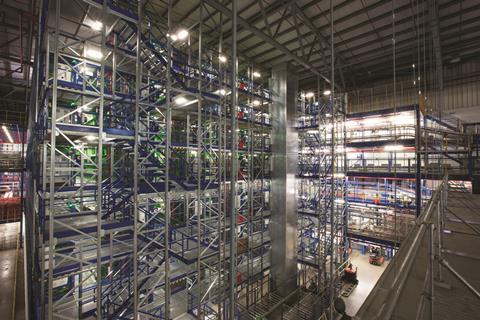
Evidence of exemplary supply chains are everywhere. Spanning multiple industries, from pharmaceuticals and consumer electronics to technology and FMCGs, such companies are 100% focused on improving their end-to-end supply chains to improve long-term stability and profitability.
In collaboration with Gartner, Retail Week has compiled its supply chain ‘premier league’ featuring the top team of 11 unbeatable supply chains from around the world. The line-up highlights the way household names such as Coca-Cola, Dell and McDonald’s are constantly integrating demand, supply and product into a supply chain network that meets ever-shifting changes in demand.
Taken from Gartner’s Supply Chain Top 25 report, these are the companies whose supply chains are helping to raise their performance to new heights. Rather than focusing exclusively on delivering cost reductions and efficiency gains to corporate bottom lines, these leaders are finding new ways to use their supply chains to enable growth.
By documenting their best practices, Retail Week’s mission is to help the retail industry move closer to supply chain excellence.
Apple
When it comes to the manufacturer of the iPhone and iPad, it’s not just stellar financials that set Apple apart. In the past year the technology giant has expanded its product portfolio to encompass an array of sizes and price points. While this new direction has helped Apple square up to formidable competition in the mobile device market, it has also driven the need for more complexity management in its supply chain.
Chief executive Tim Cook, whose expertise is in operations, has fostered increased transparency on supplier responsibility, particularly with suppliers and manufacturing partners in China, according to Gartner. In addition, Apple decided 12 months ago to relocate some of its manufacturing operations back to the US after halting production there for more than a decade. It resulted in lower transportation costs and a faster time to market.
McDonald’s
McDonald’s should be admired for its “strong new product launch capabilities and excellence in execution consistency”, says Gartner supply chain research director Stan Aronow. That is coupled with forecasting demand across all its restaurants globally. An impressive supplier collaboration framework and philosophy underpins the fast food chain’s mindset to never run out of stock, Aronow adds.
Given that McDonald’s supply chain is a complex web of direct and indirect suppliers, the company holds all suppliers to clear standards for quality, safety, efficiency and sustainability. It partners with them to identify, understand and address industry-wide sustainability challenges and achieve continuous improvement. A global governance structure called the Sustainable Supply Steering Committee has also been set up, which is to guide the creation and oversight of issues relating to sustainability.
Amazon
The ecommerce giant has reshaped the retail landscape in little more than a decade. It has not only transformed people’s views of shopping online, but quickly become one of the most trusted brands in retail. It is now crossing lines into new markets by building its digital products portfolio, from Kindle Singles web services, prime Instant Videos and a reported development of set-top boxes to stream video into people’s homes.
Amazon is a pacesetter when it comes to using its supply chain to set the standard for customer experience. Providing fast, free shipping and returns on a range of products that it offers through an extensive supplier network, the company has redefined consumers’ expectations of service.
Amazon wants to further differentiate its service by expanding existing delivery initiatives, such as making collection lockers available throughout the UK and US in shopping centres, convenience stores and train stations.
It is also aggressively investing in new physical fulfilment centres to support same-day delivery.
The Coca-Cola Company
According to Gartner, “Coca-Cola’s corporate 2020 strategic vision emphasises the key principles of innovation, creativity and focus and provides a strong basis for the collaboration needed with its bottlers”.
Coca-Cola’s supply chain focuses on reducing the complexity that comes with an evolving product and customer portfolio, taking an end-to-end view and designed to enable close working with commercial partners. It is expanding the talent and leadership capabilities among its supply chain personnel, partnering with universities to develop specialised programmes in everything from network design to negotiation skills.
In addition, the drinks giant uses its supply chain knowledge to make a difference in the world by applying its ‘last mile of distribution’ expertise to help The Global Fund deliver life-saving drugs to remote places around the world.
Unilever
Unilever’s supply chain innovations have been critical in its ability to retain profitable growth, even in the face of sluggish demand in some of its core markets. The consumer goods company is “at the forefront of the supply chain maturity curve”, according to Gartner.
Unilever implements a wide range of cutting-edge practices, including end-to-end segmentation and a cost-to-serve model, which is used to analyse the profitability of delivering certain services throughout the supply chain.
It operates a ‘perfect store’ initiative, which is based on the concept that for every variation in outlet size and location, there is an optimal merchandising layout to best serve shoppers’ needs and promote Unilever brands. Gartner praises the company for its “impressive ability to design globally and implement locally across every function of its supply chain”.
Cisco Systems
In close partnership with IT, Cisco Systems’ supply chain team is focused on proactively enabling Cisco to break into new markets for its hardware, software and services-based solutions. “Cisco is now thinking about supply chain as a menu of service offerings and taking a segmented approach to delivering the right services for each business at the right cost structure,” Gartner’s Aronow explains.
According to the Supply Chain Institute, the precision that the technology platform provider brings to its sales, operations planning and execution processes is among the best in the world. The company excels at making the supply chain strategic through all layers in the company. “As a result, Cisco leads its supply chain strategy actively from the top down and regards it as a vital part of its corporate vision,” according to the Institute.
Samsung Electronics
Samsung’s advanced and highly integrated supply chain that spans product, people and processes is key to its success. Despite its size and product diversification, the electronics manufacturer is able to dynamically arrange planning for its extended supply chain on a weekly basis,
in line with financial goals.
Samsung has driven significant innovation in retail and channel collaborative planning, leading to “reduced channel lead times and increased sell-out through dynamic point-of-sale monitoring and management”, Gartner maintains.
In the coming year it is predicted the South Korean group will make further moves to tighten its grip on vital electronics parts supplies with shareholder deals and acquisitions as it looks to compete with rival Apple in the fast-changing technology industry.
Intel
While product and manufacturing technology are at the centre of Intel’s business, the chip giant also recognises that customer-driven supply chain capabilities are critical to meeting market demands.
Over the past few years, Intel has increased supply chain responsiveness while reducing process cycle time and inventory levels. Results include more than a 50% reduction in the time it takes to ramp up a new manufacturing process; a 65% reduction in order-to-delivery time, and a three-fold increase in responsiveness to customers, according to the Intel Takes its Supply Chain to the Next Level white paper.
The company has also continued its commitment to sustainability and social responsibility in sourcing, having taken a lead role in the issue of conflict minerals in places such as the Democratic Republic of Congo.
Procter & Gamble
P&G continues to lead by example. “Whether it’s in designing a differentiated supply chain response for the segments it operates, developing platforms for open innovation, harnessing the power of analytics and management control towers to drive strong governance and improved efficiencies across its extensive network, or teaming up with the US Environmental Protection Agency to develop new tools for optimising sustainability efforts across the value chain, the company continues to define new standards of excellence for the broader supply chain community,” according to Gartner’s report.
P&G has also developed its supply chain environmental scorecard for suppliers, which measures improvements in nine key areas such as energy use, water use and waste disposal and greenhouse gas emissions on a year-to-year basis. Peter White, global sustainability director at P&G, says the scorecard is just one aspect of a productivity-driving sustainability effort. It has resulted in nearly $1bn (£610m) in bottom-line operational savings from reductions in energy, water, waste and CO2 at its own facilities over the past 10 years.
Dell
Dell continues to demonstrate innovation in its supply chain practices, despite “significant competitive product pressures and a secular downturn in the PC market”, as Gartner’s Aronow points out.
The computer technology company has built a supply chain visibility platform that allows it to respond quickly to sudden supply and demand disruptions. “Dell is also rethinking its mid-term supply network design, with a focus on becoming more adaptable in support of market shifts and resilient in its sourcing and shoring approach,” Aronow says.
In addition to engaging suppliers in collaborative cost reduction workshops for improved operational efficiencies, the supply chain team is partnering with the product engineering, sales and marketing teams to continue reducing the complexity in the product portfolio. Like Intel, Dell also engages its suppliers to responsibly source the materials used in its products and upholds the use of conflict-free materials.
Colgate-Palmolive
Six years ago Colgate-Palmolive set up a supply chain finance group that would run parallel to its corporate finance group in a bid to analyse data to drive better supply chain decisions. The team is responsible for managing supply chain metrics such as on-time deliveries, plant efficiencies and forecast accuracy.
The healthcare and household goods company is committed to improving efficiency and taking costs out across its supply chain, which is evident in its decision to avoid outsourcing manufacturing unless necessary. About 95% of its manufacturing is directly managed by the team. It also has what Gartner describes as “a well-balanced talent management program”, and believes in building talent and hiring from within the organisation. The report adds that Colgate-Palmolive has one of the most advanced sales and operations planning capabilities in the industry.
Comment: What retailers can Learn from the supply chain’s top players
Phil Streatfield and Stuart Higgins are retail partners at LCP Consulting
Nine of Gartner’s top 25 supply chain companies are retailers. They include Apple, Dell and Nike, all of which maintain a strong direct-to-consumer channel. The next biggest category with seven entries is consumer packaged goods, followed by electronics manufacturers with five and engineering with four. The distinguishing features of the retailer and consumer packaged goods segments are their endeavour to lead rather than follow consumers, combined with operational excellence. It delivers the blend of financial performance and marketplace dynamism that promotes a company into the premier league.
There are some lessons for the wider retail community in what these leaders are doing. They all provide both unique products and service through constant innovation, even if their individual experiences, or formations, are not comparable. Anyone entering an Apple store, a McDonald’s restaurant, a Starbucks coffee shop or shopping online with Amazon or Dell, knows that they will get a distinctive experience. The same is true for Zara, Nike, H&M and Walmart.
Seven of the nine offer only their own products while Amazon and Walmart retail on behalf of suppliers. The starting point and similarity for all is high levels of product availability and excellent information at the point of demand. The spectrum of marketplace positioning in the league shows that both premium and budget operators can play the game. The second key constant is offering consumers compelling value and an easily understood service proposition.
There are three important strategies for retailers. First is the need to innovate and differentiate through the product. Whether it is your own or that of suppliers, your offer needs to inspire and motivate customers. Second is that your brand must stand for a high-quality experience, consistent with your marketplace positioning. Third, is that your operation must be cost-effective; and that pressure increases towards the lower end of the market.
If you cannot differentiate then you have to out-service and out-price the competition. All three start with supply chain design, and finish with execution. In the light of the acceleration in Christmas trading towards etail, mobile and price comparison, the focus in championship retail boardrooms during the first half of 2014 should be a ground-up review of trading and supply chain competiveness and capability.




















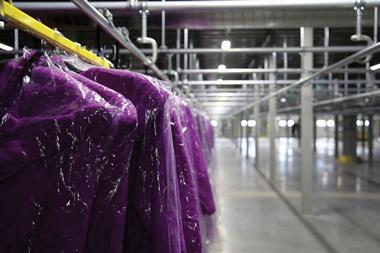

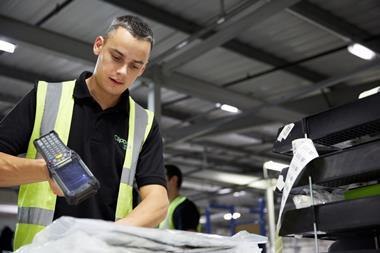
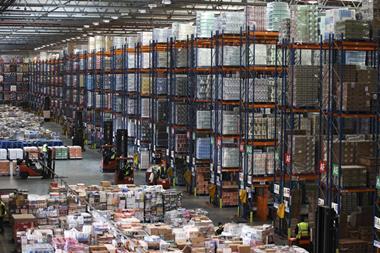

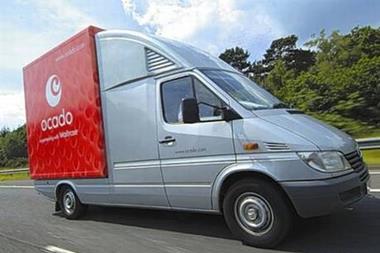
No comments yet